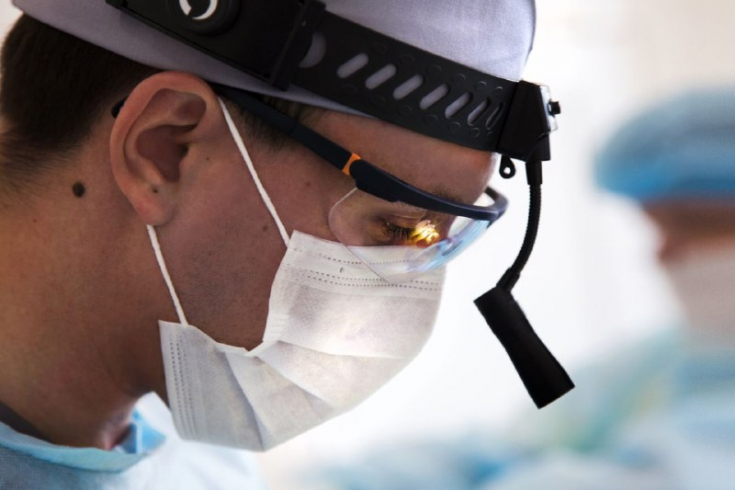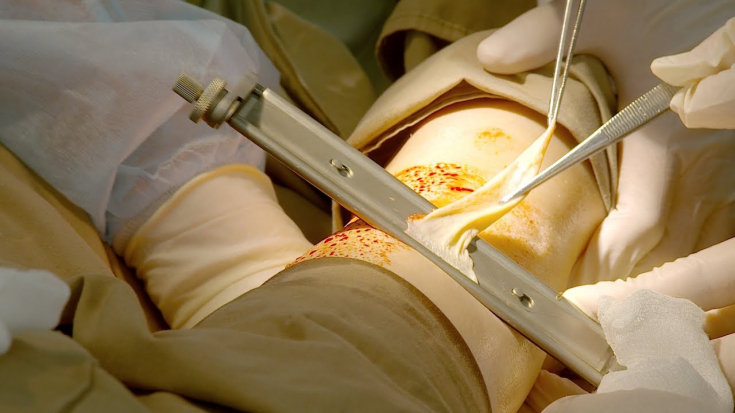Autodermoplasty with perforated graft — an operation aimed at closing a wound defect (wound) by moving a free skin graft from one's own donor area to the wound.
The use of autodermoplasty is one of the most common and affordable methods of skin grafting. Autodermoplasty involves the reconstruction of the affected areas of the tissue material.
Used in exceptional cases, when the process of cell regeneration is slow or cannot be completed. The graft is moved by cutting off from the donor medium and placed in another area in order to replace the skin deficiency.
In the article estet-portal.com you can get acquainted in detail with the quintessence of information regarding free autodermoplasty from practitioner of aesthetic medicine, plastic and reconstructive surgery Vitaly Orel.
In what cases is resorted to free autodermoplasty

V.O.: Free autodermoplasty is used to close chronic, post-traumatic, postoperative granulating wounds and to close the recipient bed during flap translocation.
Follow us on Telegram
Often, surgery is one of the possible treatments for a patient with a chronic diabetic wound, long-healing bedsores, and the consequences of amputation.
Free autodermoplasty has a wide range of indications and is the main operation in plastic surgery and combustiology.
Significant and practically the only contraindications to this operation are multiple organ failure and the patient's extremely serious condition due to decompensation of the cardiovascular system, for example, in case of massive blood loss.
Preparing the patient for free autodermoplasty
V.O.: When preparing a granulating wound for surgery, depending on the clinical situation and the degree of infection of the wound, antibiotic therapy, VAC therapy, thorough necrectomy with simultaneous alloplasty are used.

Anesthesiological support implies the use of local (regional), spinal, general anesthesia (narcosis) depending on the location of the donor and recipient wound, the general condition of the patient, the history of previous operations and diseases, and the patient's personal preferences.
A typical site for skin sampling is the anterolateral thigh, ipsilateral to the wound (on the side of the wound). The sampling is carried out using a mechanical dermatome or electric disc/linear dermatomes.
1 cm2 of the autograft corresponds to a blood loss of 3 ml.
Skin sampling from an adult patient, the area of which is comparable to his palm (1% of the body area) — 160-180 cm2, implies a blood loss of 500 ml. Therefore, the maximum area of the autograft is determined by the general condition and laboratory parameters of the patient.
Autodermografts, depending on the area of transplantation, can be perforated and non-perforated, as well as:
• thick-layer (≥0.4 mm; for the face and mobile parts of the body, their thickness ensures the lack of contractility of the graft);
• thin-layer (<0.4 mm).
Even deep burns are not terrible with competent surgical tactics
Autodermoplasty: postoperative period
VO: Autodermograft fixation is possible with bandages, sutures, metal staples. After fixing the autodermograft to the recipient bed, the process of vascularization begins on the 3-4th day.
The first 4 days after autodermotransplantation are the most critical due to the risk of infection, displacement and unsuccessful engraftment.
Antibiotic therapy is recommended for a period of 5 days, and for chronic sclerosing wounds, bone resections — extended course. In practice, symptomatic and infusion therapy is additionally prescribed, which increase the chances of skin healing and the patient's quality of life.

Common complications are:
• transplant disease;
• rejection;
• lysis;
• offset / tear off.
It is possible to prevent these complications by following the instructions of the attending physician, who selects individual therapy in each specific case.
Thank you for staying with estet-portal.com. Read other interesting articles in the "Plastic Surgery" section. You may be interested in Surgical treatment of burns: graft harvesting







Add a comment